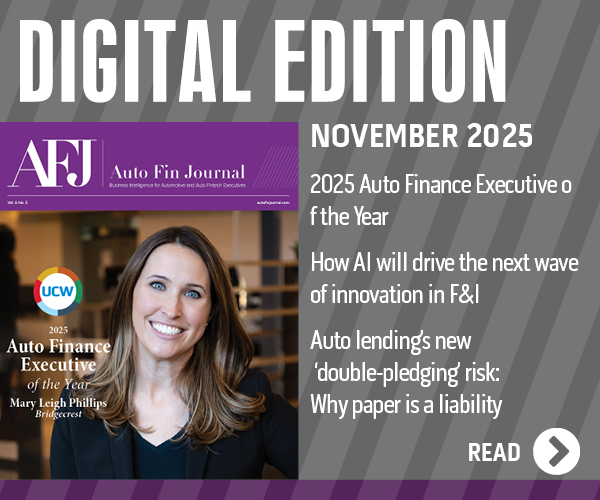ANALYSIS: Actions to take now to protect the future state of your portfolio

By subscribing, you agree to receive communications from Auto Remarketing and our partners in accordance with our Privacy Policy. We may share your information with select partners and sponsors who may contact you about their products and services. You may unsubscribe at any time.
ADDISON, Texas –
The COVID-19 pandemic will undoubtedly have repercussions for consumers and lenders alike, as we are already starting to see. What isn’t evident yet is how things will look in another month, three months, six months and beyond. Have you identified the steps you should take now to help protect the future state?
In times of economic uncertainty, auto finance and other lenders must evaluate the current risk mitigation strategies they have in place and adjust them accordingly. Regardless of the reason for the economic downturn, these periods can be stressful for lenders and consumers alike. Failing to identify necessary adjustments and implement changes can have a catastrophic impact on even the most prudently managed portfolios.
Whether lenders take on this effort themselves or seek consulting expertise, re-evaluating and adjusting risk strategies shouldn’t be considered optional, neither should lenders adopt a “wait and see” approach while relying on the status quo. Now is the time to act in order to effectively monitor and mitigate potential exposure to fraud, update collection treatment strategies, and address the impact of potential delinquencies and bankruptcies. In addition to potentially minimizing exposure to fraud and risk, lenders have a real opportunity to help their customers by identifying those that may need special consideration.
Are automated risk scoring approaches adequate?
For most lenders, an automated risk scoring approach works well under steady state micro and macro-economic conditions. In dynamically changing environments that have a profound impact on consumers, a previously static strategy should be monitored and adjusted on an ongoing basis, particularly when addressing subprime and other populations that are more prone to losses. When lenders are faced with the potential of an increase in delinquencies, a well-defined methodology is critical to help track scorecard variations to determine if adjustments to score cutoffs or pricing are needed.
To address the challenges posed by economic and societal changes, a series of steps can help mitigate risk and improve automated risk scoring mechanisms. New strategies for loan refinance, payment delay or forbearance, and collections are going to be needed.
• Leveraging a past production cache or data stored in a data warehouse, produce through-the-door distribution of risk scores, model attributes, volumes and Population Stability Index (PSI) as your benchmark.
Subscribe to Auto Remarketing to stay informed and stay ahead.
By subscribing, you agree to receive communications from Auto Remarketing and our partners in accordance with our Privacy Policy. We may share your information with select partners and sponsors who may contact you about their products and services. You may unsubscribe at any time.
• Once the benchmark is established, track distribution of risk scores, model attributes, volumes, PSI, on a daily, weekly, or monthly basis.
• Analyze trends and divergence from the benchmark, then identify new risk score cutoffs and strategies.
• If needed, perform this regular tracking, reporting and analysis on a long-term basis.
Always be testing and adjust your underwriting accordingly
An enhanced underwriting process that factors in loan deferment, loan forbearance, and ability to cure are critical. As an example, you could have consumers with artificially high scores that have shown no short-term change as a result of forbearance. A decision to lend should most likely not be made if the potential debt burden will be too high once the customer exits the forbearance or deferment window. You can help your customers avoid ‘payment shock’ once the period ends and deferred payments are due.
An effective approach to testing will help lenders understand how key factors will impact their client base. Pre-developed test sets can help risk managers and credit analysts easily test the impact of changes to different variables to help determine if adjustments to the credit policy are needed. To conduct an impact analysis in a test environment, test data that is specific to each of these scenarios can be extremely useful — bankruptcy, collections, delinquency, experience of trades, and new credit. Understanding the impact of changes to these variables on your scoring models will, in turn, help you formulate appropriate collection and treatment strategies.
Keep your customers in mind
It is important that you remain in tune with your customers’ individual debt burdens, and balance the management of risk with empathy for your customers and the unanticipated situation they find themselves in. With more loan deferrals and forbearance, the ability of auto finance applicants to assume additional debt may be in question and can create undue and unnecessary burden. A shift in strategy and focus now will benefit everyone in the long run.
Michael Sogomonian is the director of decision science at Digital Matrix Systems.


